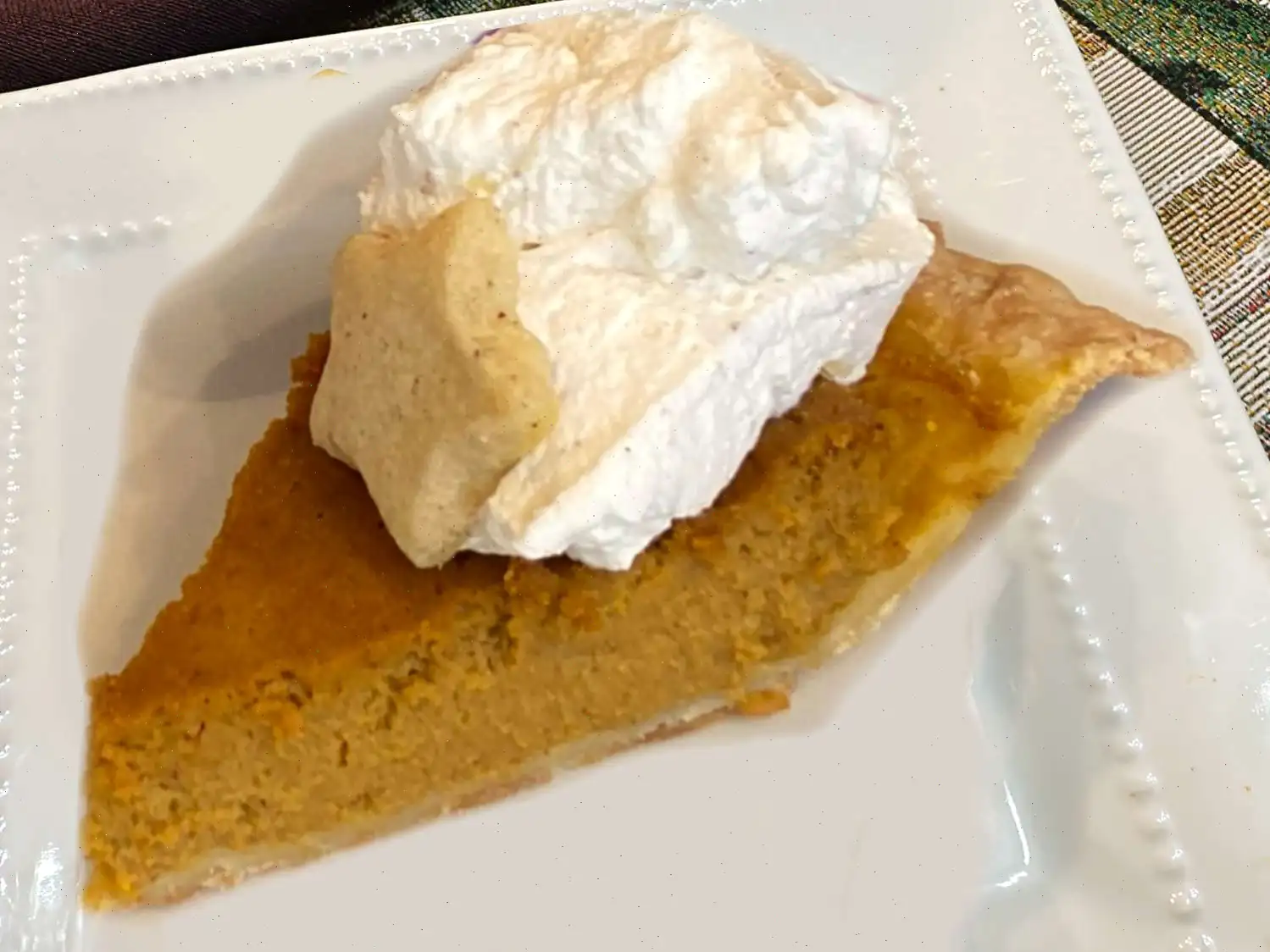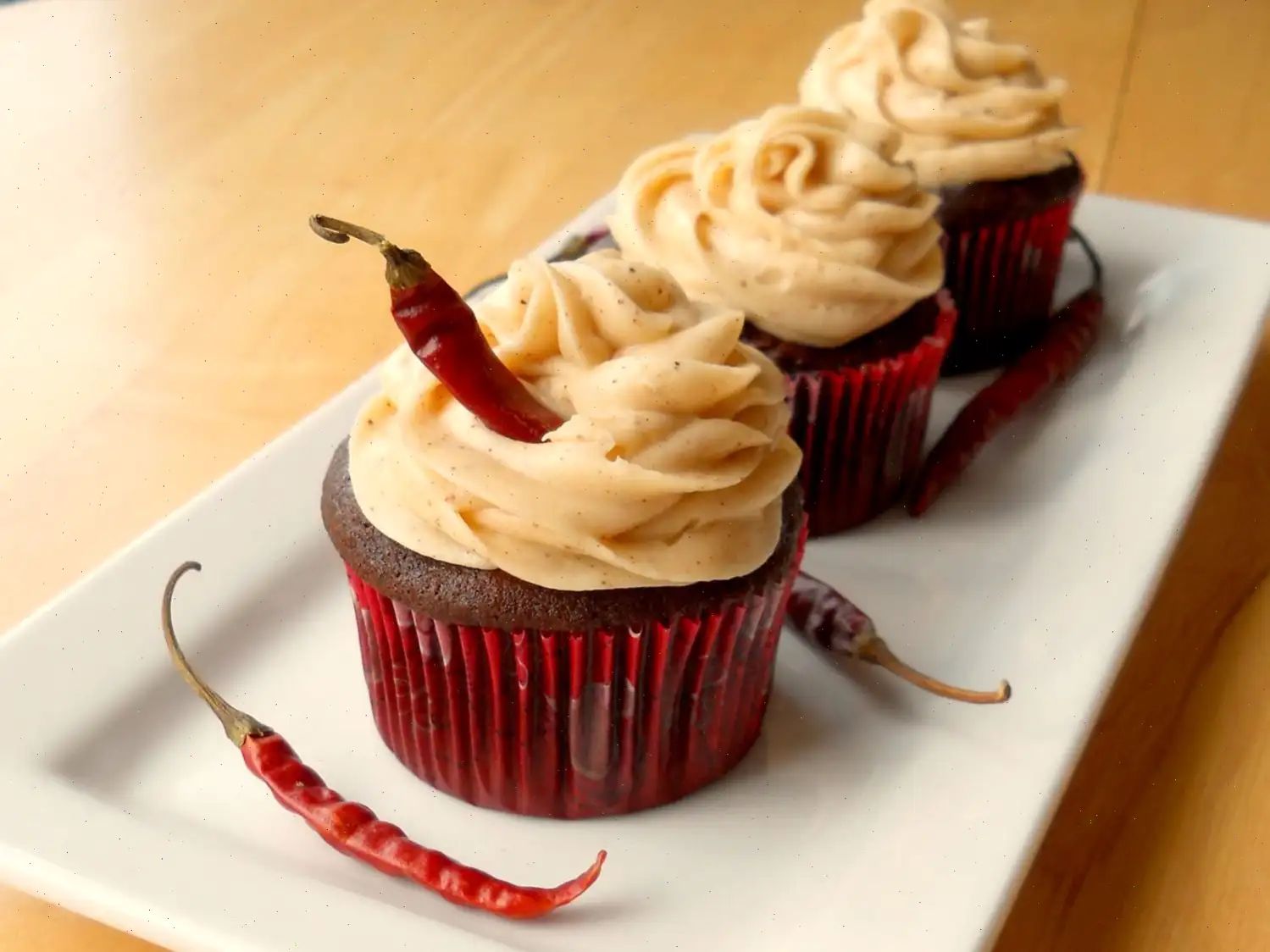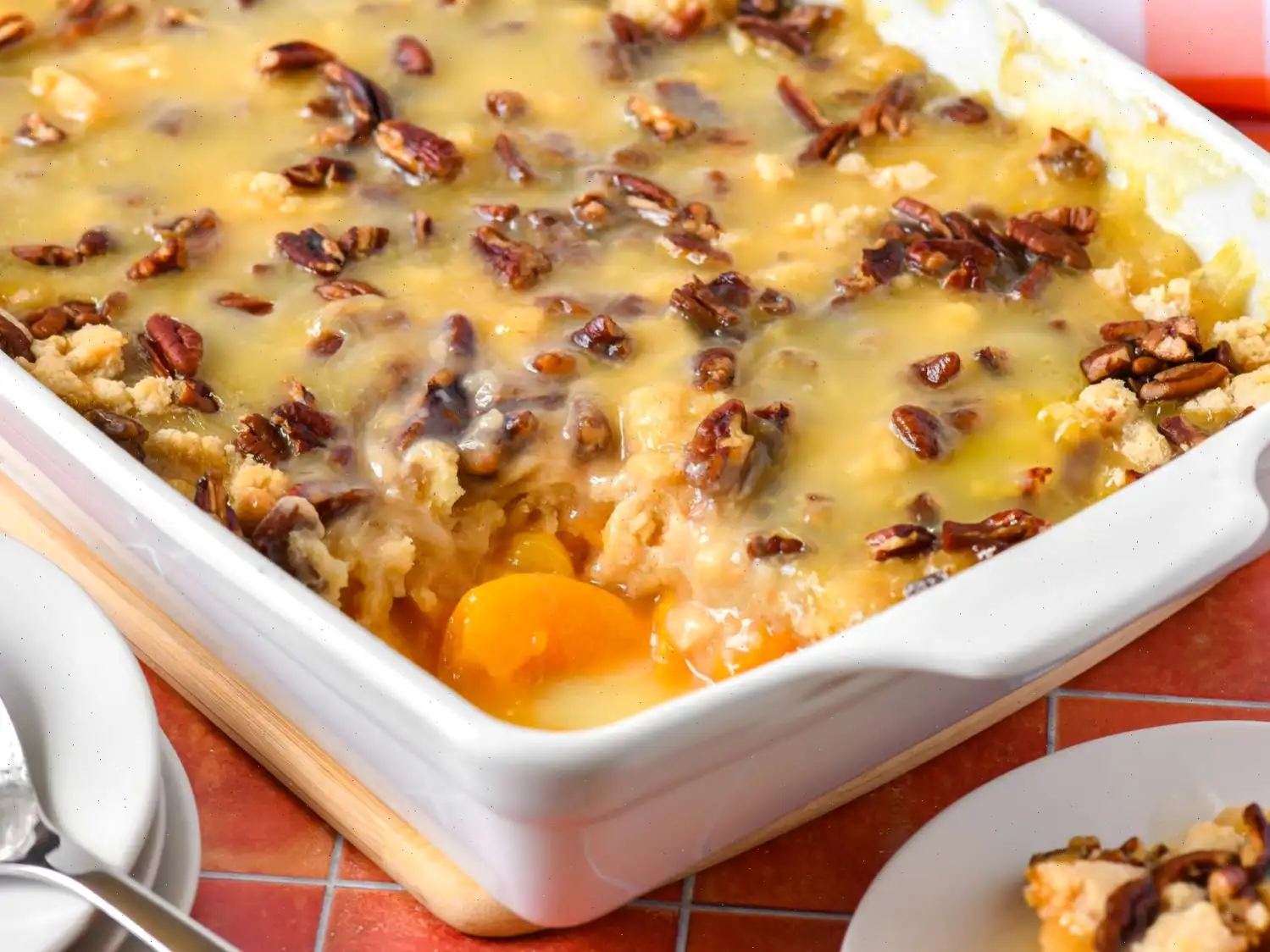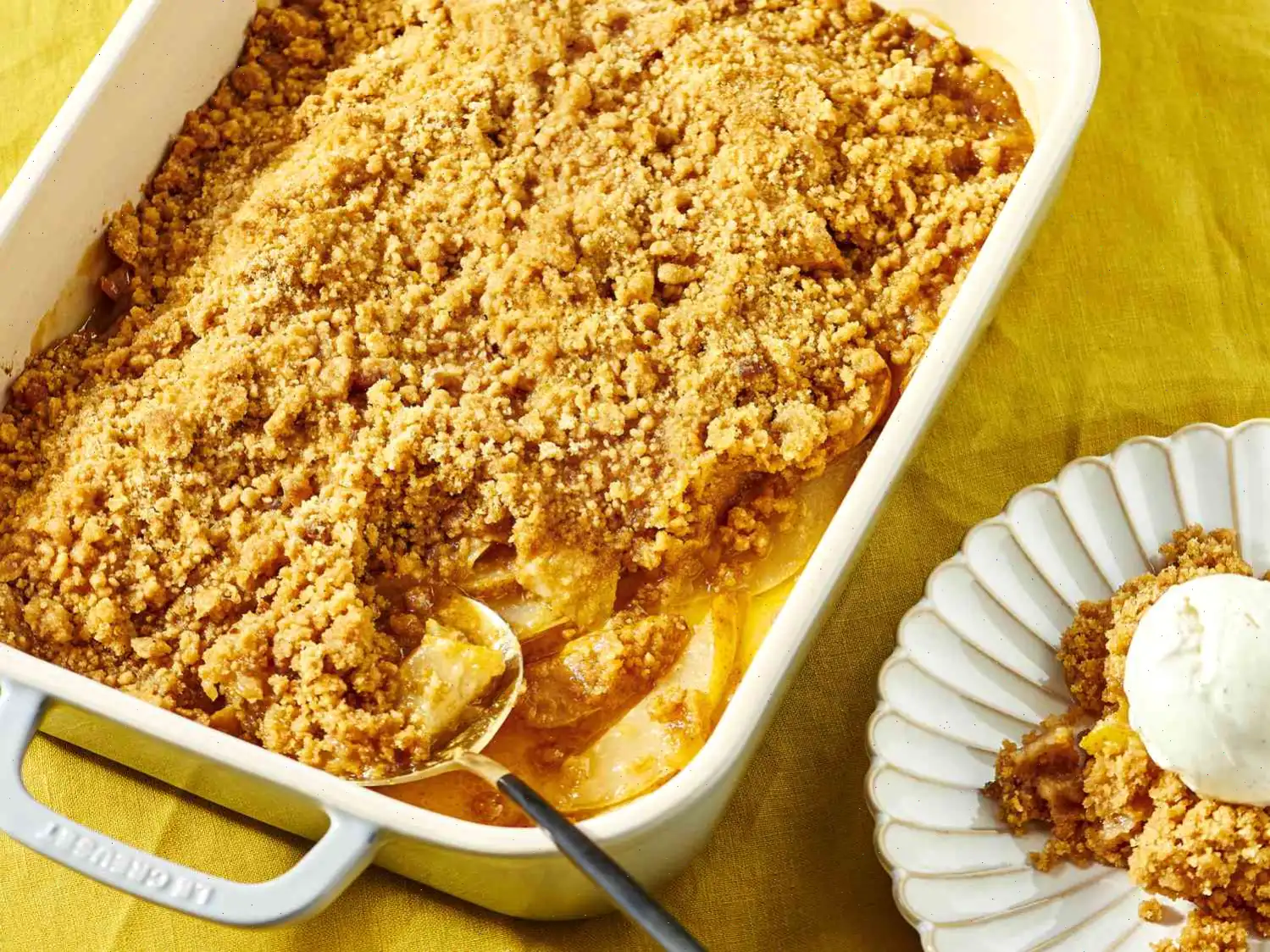
Passover Apple Cake Recipe
Ingredients
This recipe was developed at its original yield. Ingredient amounts are automatically adjusted, but cooking times and steps remain unchanged. Note that not all recipes scale perfectly. The original recipe yields 12 servings.
- 1 cup vegetable oil
- 1 cup white sugar
- 2 large eggs
- 1 cups matzo meal
- cup potato starch
- 2 teaspoons ground cinnamon, divided
- 8 large apples, peeled, cored, and sliced
- cup brown sugar, or more as needed
- teaspoon ground nutmeg
Directions
Step 1: Preheat the oven to 350F (175C). Grease a 9x13-inch glass baking dish.
Step 2: In a large bowl, beat the vegetable oil, white sugar, and eggs with an electric mixer until fully combined and smooth.
Step 3: Stir in the matzo meal, potato starch, and 1 teaspoon of cinnamon until well mixed. Set the batter aside.
Step 4: In a separate large bowl, toss the sliced apples with cup brown sugar, the remaining 1 teaspoon of cinnamon, and nutmeg until the apples are evenly coated.
Step 5: Pour half of the prepared batter into the greased baking dish and spread it evenly.
Step 6: Add the apple mixture on top of the batter, spreading it out in an even layer.
Step 7: Spoon the remaining batter over the apples, gently patting it down to cover the apples as needed. Optionally, sprinkle some additional brown sugar over the top.
Step 8: Place the dish in the preheated oven and bake for 45 minutes, or until the top is golden and a toothpick inserted into the center comes out clean.
Nutrition Facts
Per serving (1/12 of the recipe):
- Calories: 426
- Total Fat: 20g (25% Daily Value)
- Saturated Fat: 3g (14% Daily Value)
- Cholesterol: 35mg (12% Daily Value)
- Sodium: 16mg (1% Daily Value)
- Total Carbohydrate: 64g (23% Daily Value)
- Dietary Fiber: 4g (15% Daily Value)
- Total Sugars: 41g
- Protein: 3g (6% Daily Value)
- Vitamin C: 7mg (7% Daily Value)
- Calcium: 27mg (2% Daily Value)
- Iron: 1mg (4% Daily Value)
- Potassium: 177mg (4% Daily Value)
* Percent Daily Values are based on a 2,000 calorie diet. Your daily values may be higher or lower depending on your calorie needs.
History of the Passover Apple Cake
The Passover Apple Cake has become a staple of Jewish households during the Passover holiday, celebrated in spring. The cake reflects a blend of religious tradition and the need for creative cooking within the constraints of the holidays dietary laws. During Passover, Jews are prohibited from consuming leavened bread, and instead, matzo meal and potato starch are used as the primary base for baking. The Passover Apple Cake is a perfect example of how this constraint has led to the creation of delicious, unique desserts that incorporate the season's best produce, like apples.
Originally, many Jewish communities across the world would adapt their regular recipes to meet Passovers requirements. The Passover Apple Cake, with its use of apples, cinnamon, and a dense, crumbly texture from matzo meal, became a favorite choice for the Seder meal and the days following, offering a sweet treat that contrasts with the otherwise more savory foods traditionally served during Passover.
Regional Variations of the Passover Apple Cake
While the core ingredients remain the same, regional variations of Passover Apple Cake are found in Jewish communities around the world. For instance, in Eastern Europe, where Jewish cuisine is often rich in hearty flavors, the cake might be made with a heavier, more dough-like batter, sometimes including nuts or other fruits. In contrast, communities in the Mediterranean or the Middle East might introduce citrus zest, such as orange or lemon, to add a refreshing note to the cake.
Furthermore, some variations use almond flour or coconut flour instead of matzo meal, which adds a different texture and flavor, while also catering to those who require gluten-free options. In some households, the cake may be spiced with nutmeg or cloves, adding warmth and complexity to the flavor.
How the Passover Apple Cake Differs from Similar Desserts
The Passover Apple Cake stands apart from traditional apple cakes or apple pies in a few key ways. Firstly, the use of matzo meal instead of regular flour gives the cake a denser, more rustic texture. This substitution is essential during Passover when wheat flour is prohibited. The result is a cake that has a crumbly, slightly sandy texturesomething that might seem unusual to those used to the airy, fluffy consistency of regular cakes.
Additionally, the Passover Apple Cake typically doesnt use any rising agents like baking powder or yeast, which are restricted during the holiday. Instead, the cake relies on the natural moisture from the apples and the density of the matzo meal to create a filling, satisfying dessert. Unlike other apple-based cakes that may feature butter or milk, Passover cakes are often dairy-free, aligning with the kosher-for-Passover rules that prohibit mixing dairy and meat products.
Where Is the Passover Apple Cake Typically Served?
The Passover Apple Cake is most commonly served during the Seder meal, which marks the beginning of Passover. However, its popularity extends beyond the first night of the holiday. Many Jewish families enjoy it throughout the week of Passover, often as a dessert following the main meal or as a sweet snack with coffee or tea.
While the Passover Apple Cake is a staple in many Jewish homes, it is also often shared at communal gatherings and potlucks, especially in regions with large Jewish populations. In these settings, the cake provides an opportunity to share a beloved family recipe and to celebrate the traditions of the holiday with loved ones.
Interesting Facts About the Passover Apple Cake
Did you know that the Passover Apple Cake is sometimes used to help teach children about the significance of the Passover holiday? The cakes ingredients, like apples and cinnamon, symbolize the sweetness and abundance of the holiday, which celebrates the liberation of the Jewish people from slavery in Egypt. The apples also represent the apple trees in the biblical story of the Exodus.
Another fun fact is that despite the cake's rich flavor, it is often seen as a healthier dessert choice compared to other Passover sweets. It contains fewer fats and sugars than many traditional Passover cakes and pastries, making it a lighter option that still satisfies those with a sweet tooth. This makes it a popular choice for those looking to balance indulgence with tradition during the week-long holiday.
FAQ about Passover Apple Cake Recipe
Comments
Kevin Martinez
06/03/2024 07:56:53 AM
Review Rewritten: This dessert is incredibly delicious! I agree with another reviewer who suggested adjusting the batter-to-apples ratio. When I followed the original instructions, I realized the batter amount was insufficient for a 9 by 13 pan. I quickly switched to a 7 by 11 pan, layering half of the batter on the bottom, then added 3/4 of the apple mixture, before topping with the remaining batter. I recommend either increasing the batter amount or reducing the apples. I find the negative reviews puzzling because this cake doesn’t taste like a typical Passover dessert. My family absolutely loved it, and if you try one thing from this recipe, make sure it’s this cake – trust me, it’s amazing!
Brandon Sanchez
03/20/2023 02:48:53 AM
This recipe turned out great using Gluten Free Matzo Meal and a stevia-based sugar substitute. After taking into account some of the feedback, I opted for a spring form pan and used a single batch of batter with 5 apples. The resulting cake ended up being over 2 inches in height. My partner and I managed to devour 40% of it after dinner tonight. For the next attempt, I plan to include just a pinch of salt for added flavor.








